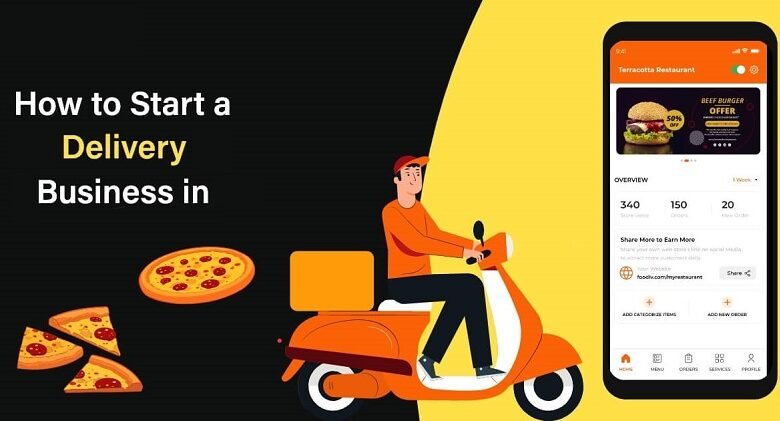Starting a Delivery Business: A Comprehensive Guide

The delivery industry is booming, thanks to the rise of e-commerce and changing consumer habits. If you’re considering starting a delivery business, this guide will provide you with essential information and steps to get your venture off the ground.
Market Research and Planning
Before diving into the delivery business, conducting thorough market research is crucial. This will help you understand your potential customers, competitors, and the overall market demand.
- Identify Your Niche: Determine the type of delivery service you want to offer, such as food, groceries, packages, or specialized items.
- Analyze Competitors: Study existing delivery businesses in your area to understand their strengths and weaknesses.
- Customer Needs: Identify the pain points of potential customers that your service can address.
Business Plan Development
A well-structured business plan is essential for guiding your business and securing funding. Your business plan should include:
- Executive Summary: A brief overview of your business, including your mission and vision.
- Business Description: Detailed information about the type of delivery service, target market, and unique selling points.
- Market Analysis: Insights from your market research, including customer demographics and competitor analysis.
- Organizational Structure: Outline of your business structure, management team, and staffing needs.
- Marketing Strategy: How you plan to attract and retain customers through advertising, promotions, and partnerships.
- Financial Projections: Comprehensive financial projections that include break-even analysis, revenue forecasts, and startup costs.
Legal and Regulatory Requirements
Starting a delivery business involves complying with various legal and regulatory requirements:
- Business Registration: Ensure that your company is registered with the relevant government agencies.
- Licenses and Permits: Obtain necessary licenses and permits for operating a delivery business in your area.
- Insurance: Secure insurance coverage to protect your business, vehicles, and employees.
Acquiring Vehicles and Equipment
The backbone of a delivery business is its fleet of vehicles and equipment. Consider the following:
- Vehicle Selection: Choose vehicles that suit the type of deliveries you will be making. Options range from bicycles and motorcycles to vans and trucks.
- Maintenance and Fuel: Establish a maintenance schedule and consider fuel-efficient options to reduce operational costs.
- Delivery Equipment: Invest in necessary equipment such as GPS devices, delivery bags, and safety gear.
Hiring and Training Staff
Your delivery team plays a vital role in the success of your business. Focus on:
- Recruitment: Hire reliable and experienced drivers with a clean driving record.
- Training: Provide comprehensive training on delivery procedures, customer service, and safety protocols.
- Employee Retention: Implement strategies to retain staff, such as competitive pay, benefits, and a positive work environment.
Implementing Technology Solutions
Leveraging technology can streamline your delivery operations and enhance customer satisfaction:
- Delivery Management Software: Invest in software to manage orders, track deliveries, and optimize routes.
- Mobile App: Develop a mobile app for customers to place orders, track deliveries, and provide feedback.
- Online Presence: Create a website and utilize social media to promote your services and engage with customers.
Marketing and Customer Acquisition
The secret to drawing in and keeping clients is effective marketing. Consider the following strategies:
- Digital Marketing: Use SEO, social media marketing, and email campaigns to reach your target audience.
- Partnerships: Collaborate with local businesses to offer delivery services for their products.
- Promotions: Offer introductory discounts, loyalty programs, and referral incentives to attract new customers.
Monitoring and Scaling Your Business
Once your delivery business is up and running, focus on monitoring performance and scaling your operations:
- Performance Metrics: Track key performance indicators (KPIs) such as delivery times, customer satisfaction, and order volumes.
- Customer input: To enhance your offerings, consistently collect and evaluate input from your clientele.
- Expansion Plans: Identify opportunities for expansion, such as new delivery areas, additional services, or franchising.
Starting a delivery business can be a rewarding venture with the right planning and execution. By following these steps, you can build a successful delivery service that meets the needs of your customers and thrives in a competitive market.




